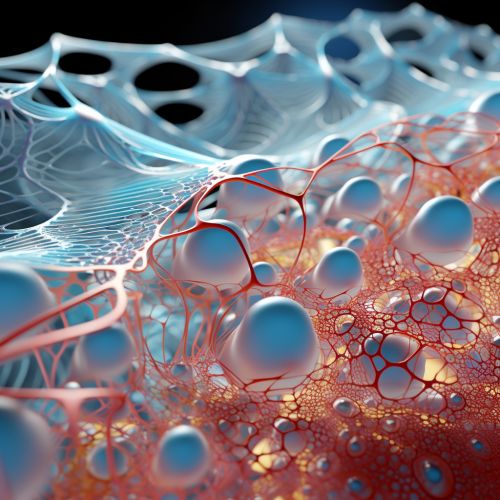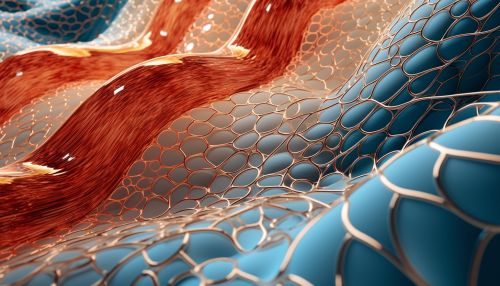Membrane potential
Overview
The membrane potential is a fundamental aspect of cell biology, representing the electrical potential difference across a cell's plasma membrane. It is a form of potential energy that is generated by the differential distribution of ions across the membrane. The membrane potential is crucial for various cellular processes, such as the transmission of nerve impulses in neurons, muscle contraction, and the transport of nutrients into cells.
Generation of Membrane Potential
The generation of membrane potential is primarily due to the action of ion pumps and ion channels embedded in the cell membrane. The sodium-potassium pump, for instance, actively transports three sodium ions out of the cell for every two potassium ions it pumps in, creating a net negative charge inside the cell. This active transport of ions against their concentration gradient is powered by adenosine triphosphate (ATP), the cell's energy currency.


Ion Channels and Membrane Permeability
The membrane potential is also influenced by the permeability of the cell membrane to different ions, which is controlled by ion channels. These proteins can open or close in response to various signals, allowing specific ions to flow down their concentration gradient. For instance, voltage-gated ion channels open in response to changes in the membrane potential, while ligand-gated ion channels open when a specific signaling molecule, or ligand, binds to the channel.
Resting Membrane Potential
The resting membrane potential refers to the membrane potential of a cell at rest, i.e., not undergoing any active electrical signaling. This potential is typically negative due to the cell's interior being more negatively charged than the exterior. The exact value of the resting membrane potential can vary between different cell types, but it typically ranges from -60 to -80 millivolts (mV) in animal cells.
Action Potentials
An action potential is a rapid, temporary change in the membrane potential that occurs in response to a stimulus. It is characterized by a rapid depolarization, where the membrane potential becomes less negative or even positive, followed by a repolarization phase where the membrane potential returns to its resting value. Action potentials are the primary means of long-distance electrical signaling in neurons and muscle cells.
Role in Cellular Processes
The membrane potential plays a critical role in various cellular processes. In neurons, changes in the membrane potential are responsible for the transmission of electrical signals along the nerve fiber. In muscle cells, changes in the membrane potential trigger muscle contraction. The membrane potential also drives the transport of nutrients into cells and the expulsion of waste products out of cells.
Measurement of Membrane Potential
The membrane potential can be measured using various techniques, such as the patch-clamp technique, which allows for the direct measurement of ion currents across the cell membrane. Other methods include the use of voltage-sensitive dyes and genetically encoded voltage indicators.
